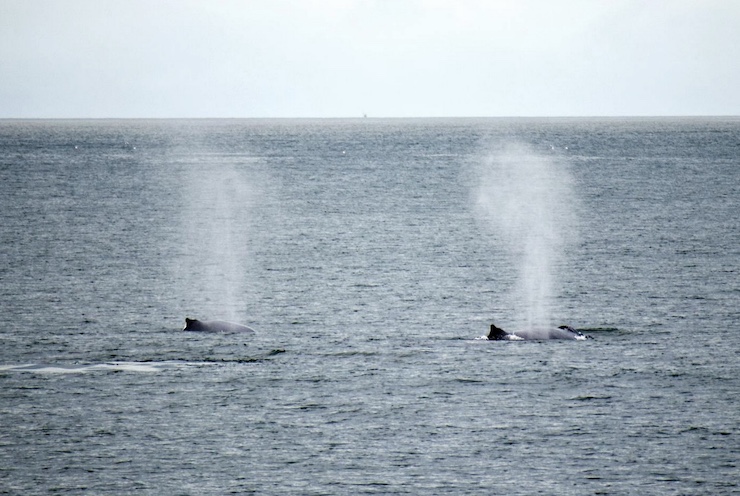
In 2020, world renowned marine biologist David Gruber, a Presidential Professor of Biology and Environmental Sciences at Baruch College and the City University of New York, and a National Geographic Explorer, founded the Project Cetacean Translation Initiative (CETI). The name is an homage to the SETI Institute, which is dedicated to exploring and understanding the origins of our universe. After years of successfully combining robotics and technology to study marine biology, Professor Gruber was inspired by the work of Dr. Roger Payne to form CETI with the purpose of understanding the acoustic language systems of sperm whales.
In the late 1960s, Dr. Payne’s research on the songs of whales spurred the “Save the Whales” movement, ultimately preventing the extinction of several populations of whales. Professor Gruber realized that if people were inspired simply by knowing that whales communicate with each other, the impact of knowing what they were communicating about could be monumental for conservation. Using funding from the TED Audacious Prize, the nonprofit Project CETI has been collecting data on sperm whale communication from their research vessels off the coast of Dominica.
For the project to be successful, Professor Gruber has collaborated with researchers from around the world. Of paramount importance to the project is the support provided by researchers from multiple robotics departments within Harvard University. Professor Gruber has had a close working relationship with Professor Robert Wood, director of Harvard’s MicroRobotics Laboratory, for many years. The team has invented several unique unmanned robotic systems for marine study. For CETI, different Harvard teams have developed unique AI-based recording systems that are helping the organization develop a sort of decoding system for whale sounds.
However, finding a way to precisely know where and when to record a whale is a timely and costly process. In a new collaboration, a team of researchers from the Harvard John A. Paulson School of Engineering and Applied Sciences (SEAS), led by Assistant Professor of Computer Science Stephanie Gil, has joined Project CETI. Sushmita Bhattacharya, one of the researchers working with Professor Gil, explained that the current CETI team has made tremendous steps forward in developing a model that analyzes whale behaviors based on acoustic communications. To gather the data for analysis, Project CETI needs to send a drone with highly tuned recording devices to meet the whale at the exact time it surfaces. If the drone isn’t in the right spot at the right time, the team misses their window of opportunity and may need to wait another hour before another opportunity arises.
“Our objective,” Sushmita says, “is to find a solution to automate audio-visual data collection that facilitates our understanding of whale language and physical interactions, and also reduces time- and effort-intensive boat trips.” The whales being studied by CETI have tags that allow teams to monitor their locations, but not enough for researchers to know when and where the whales will surface for data collection. The acoustic environment of the water, explains doctoral student on the team Ninad Jadhav, further interferes with precise location prediction.
To address these challenges, Professor Gil, Sushmita, and Ninad deployed a waterproof SwellPro Splash Drone 4 to create an AI enhanced predictive algorithm for when and where a whale would surface. The project resulted in what the team has called the Autonomous Vehicles for whAle Tracking And Rendezvous by remote Sensing (AVATARS) framework. AVATARS works by using a drone to observe wave patterns in relation to the signals from the whale tags. The drone measures the phase information, the position of wave peaks, and compares it to the location of the whale’s tag. The drone’s AI computer can then predict where and when a whale will surface, autonomously fly to that location, and collect the desired visual and audio data.
Professor Gil and her team discovered that by using two drones with the AVATARS framework, positioned within a 1,000 meter radius, they were able to successfully predict exactly where and when a whale would surface 80% of the time. Further, the AVATARS drone system was able to correctly predict the surfacing of whales without any tags 69% of the time. Professor Gil recognizes that there is still more to be done to perfect the system, but the AVATARS drone program opens vast possibilities for researchers studying whales and marine ecosystems. As CETI and its collaborators continue to refine these groundbreaking technologies, the dream of truly understanding and protecting one of Earth’s vulnerable whale species moves closer to reality.
|